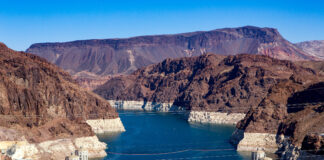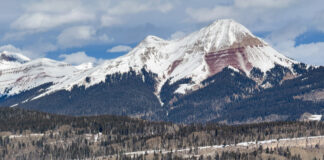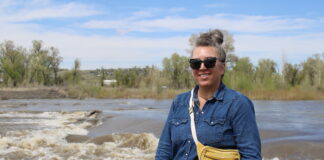
By Jerd Smith
Nearly one year after the state ordered Yampa River water users to begin measuring their diversions from the iconic river, local community groups have raised more than $200,000 to help cash-strapped ranchers and others install the devices needed to comply with the law.
According to Erin Light, the top water regulator in the region, roughly 60 percent of diversion structures, about 1,760 in total, remain out of compliance in what is known as Colorado’s Water Division 6, which includes the Yampa, North Platte, White and Green river basins.
Under state law, water users who do not measure their diversions can be subject to prosecution and have access to their water rights suspended, something the state has threatened to do but has not yet implemented.
Local groups, including the Upper Yampa Water Conservancy District and the Yampa/White/Green Basin Roundtable, have stepped up to help, creating a $200,000 grant fund to ensure those who are trying to comply can afford to do so.
“Everyone is interested in getting the best infrastructure we can into the river,” said Holly Kirkpatrick, who is overseeing the grant program for the conservancy district. “A lot of different organizations are working very hard on this.”
The Yampa River Fund, spearheaded by The Nature Conservancy, also plans to step in with funding should the need arise.
“I envision that there will be a request for funding,” said fund manager Andy Baur, “and we are here to help.”
This remote region in the northwest corner of the state for decades has had so much water that regulators rarely had to step in to ensure the rivers’ supplies were being properly distributed in accordance with state water law, something it does routinely in Colorado’s other major river basins. But as water shortages loom in the state, the Yampa is coming under increasing scrutiny.
“People need to understand that if we find ourselves in another administrative situation [where the Yampa runs dry as it did in 2018], people need to know they will be shut off,” said Light, who oversees the region for the Colorado Division of Water Resources.

The picture is much different than even 20 years ago, when Yampa Valley ranchers and other water users with water rights were often able to divert as much as they wanted whenever they wanted because the river had huge flows and relatively few demands.
Light, who oversees the Yampa and North Platte basins, as well as the Green and White river sub-basins, said the White River region has the most work to do to comply with the state’s order, with 83 percent, or 596, of its diversion structures taking water that is not being measured.
On the Yampa River, 50 percent of diversion structures, or 900, remain unmeasured, Light said. In the North Platte, 34 percent, or 190, lack measuring devices, while in the Green 74, or 69 percent, of devices remain unmeasured, Light said.
Because the White and Green sub-basins are so remote, and installing measuring devices can cost thousands of dollars, Light said she is giving water users there another year to comply with the order.
At the same time, she said she has granted more than 100 extensions to water users who are trying to comply to give them more time to find funds and get the work done.
Light said she is hopeful ranchers and others will begin to understand that measuring is no longer optional, and that those who begin recording their water use will have new opportunities as the entire Colorado River system, to which the Yampa, White and Green rivers are tributary, moves into a water-short future.
Under at least one scenario now being studied, a large, statewide conservation program called demand management would pay ranchers and others to voluntarily forego their water diversions for a period of time. Options to receive payment for suspending use would only be available to those who have diversion records that demonstrate how much water they’ve historically used.
“If someday we have an opportunity to [temporarily] dry up lands under a demand management program, their [actual water] use will be greatly in question because they have not measured their water. As demands get higher in the Colorado River, it’s going to behoove them to measure,” Light said.
Jerd Smith is editor of Fresh Water News. She can be reached at 720-398-6474, via email at jerd@wateredco.org or @jerd_smith.
This story originally appeared on Fresh Water News, an independent, non-partisan news initiative of Water Education Colorado. WEco is funded by multiple donors. Its editorial policy and donor list can be viewed at wateredco.org.





